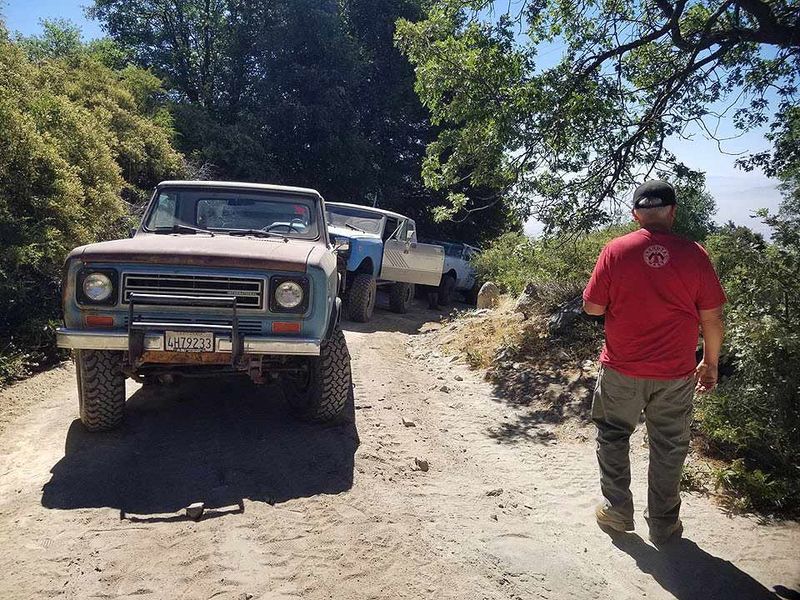
In a quiet backwater of the new-vehicle market during the 1960s and much of the ’70s, four rugged off-road vehicles battled annually for the few thousand sales available: Land Rover’s Series II (precursor to the Defender), the Jeep CJ (today’s Wrangler), the original soft-top Ford Bronco and the International Scout.
Two of those are once again available. The new Land Rover Defender arrived at U.S. dealers this spring, and an all-new Bronco arrives in less than a year. The Wrangler, of course, never went away and for decades has been uncontested in many ways.
Only one of those original off-road 4X4s is missing from showrooms today: The Scout, which arrived in 1961 — five years before the Bronco — and can legitimately lay claim as one of America’s first true SUVs.
It isn’t really clear who made America’s first SUV. Chevrolet claims the Suburban, which has been in production since 1935, owns the title. But for most of its existence, the Suburban has not been a dedicated off-road vehicle.
Nonetheless, the latest shift to rugged off-road SUVs is turning out to be a big thing. Land Rover’s plant in Nitra, Slovakia, is working to fill a backlog of 20,000 orders for the latest Defender. Ford has received 150,000 reservations for the new Bronco and is looking at ways to increase production. Wrangler sales have set records in recent years, thanks to constant improvements covering everything from powertrains to refinements that keep wind, water and dirt out of the interior.
Although the Scout was discontinued in 1980, there is the same kind of vibrant enthusiast community keeping the old nameplate going that helped convince Land Rover and Ford officials to develop a new Defender and Bronco.
Even as Scout clubs and a cottage industry have grown over the years to keep the SUV’s following alive, Navistar International spokeswoman Bre Whalen says the company’s focus is on commercial trucks and that there are no plans to re-enter the consumer market.
The light-vehicle marketplace is probably not a priority when the Illinois company is struggling to meet demands of the heavy truck industry it serves. The pressure to hike fuel economy and lower emissions, combined with developing trucks with self-driving features, are capital-intensive undertakings. And then there is a potential buyout from Volkswagen Group’s truck unit on the table.
Lynn Faeth, who owns the Scout Connection in Fort Madison, Iowa, a business that buys, sells and restores classics Scouts and sells repair parts, says Scout owners would love a modern version — not to replace their classics, but to be used alongside them. And he says executives at International are aware of the cult following the Scout has attained.
Arnold Leos, president of Scouts West, a club with three chapters in California, says many members want International to bring out a new version.
International built the Scout from 1961 to 1980 over two generations. The original Scout, a stubby two-door soft-top, had a 10-year run and was replaced by the Scout II in 1971. That model could be had with a removable fiberglass hard top. It sported many technical upgrades and legitimately challenged the Wrangler for several years. The Land Rover Series II was withdrawn from the U.S. at the end of 1974, while Ford’s Bronco — basically little changed from the 1966 original — remained in production until 1975. It was replaced with a completely different model the following year.
Nearly every automaker today has a showroom packed with cookie-cutter SUVs and crossovers. These are, essentially, the new sedans. They look alike, cost alike, perform alike; there’s basically no difference among a Chevy Equinox, a Ford Escape, a Honda CR-V, a Toyota RAV4, a Kia Sportage and dozens of others.
So it’s no wonder that a growing number of consumers want an SUV that really can take them anywhere.
Faeth said he is watching the talks between Volkswagen and Navistar. If that deal comes to fruition, it might help bring about a new Scout. “You never know what could happen,” Faeth said. Until then, classic Scouts will have to suffice, and it looks like they will.
Says Leos: “There’s a real enthusiastic group that keeps ’em going, and they are still off-roading.”